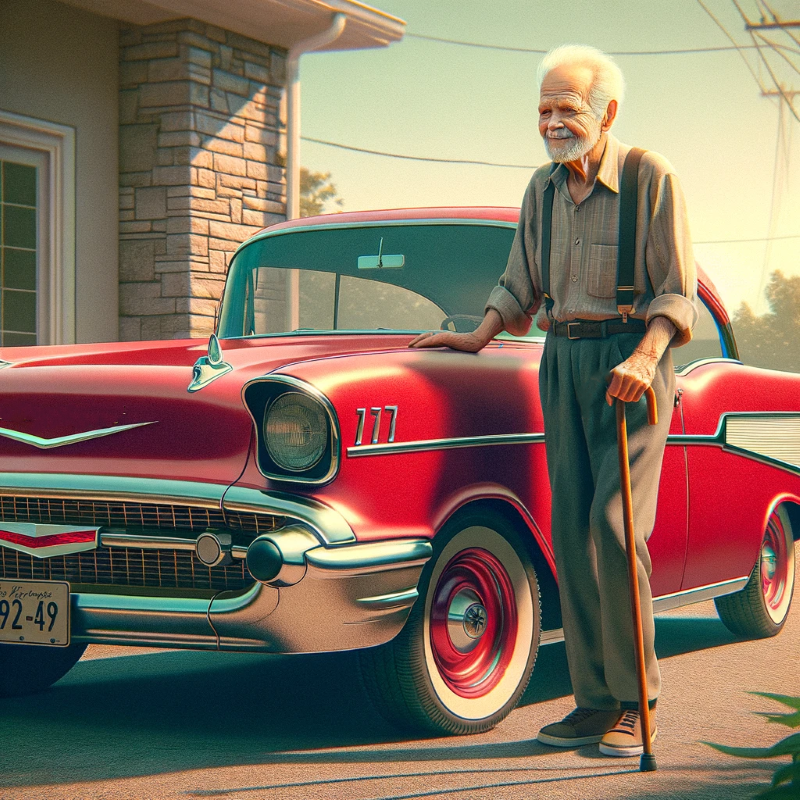Driving Safely with Parkinson’s

Driving represents more than just a means of transportation; it’s a symbol of freedom, autonomy, and independence. For individuals living with Parkinson’s disease (PD), the ability to drive can significantly impact their quality of life. However, as PD progresses, the accompanying symptoms may alter an individual’s ability to drive safely. This blog post delves into how PD affects driving abilities, introduces practices for safe driving, and explores alternatives when driving is no longer safe. Our goal is to navigate this sensitive topic with the respect and attention it deserves, ensuring that the information provided supports both the individuals directly affected by PD and the broader community.
PD Symptoms & Side Effects That Impact Driving
Parkinson’s disease brings with it a host of symptoms that can impede the ability to drive. Motor control issues like tremors, stiffness, and bradykinesia can make the precise movements required for driving challenging. For instance, tremors may affect one’s grip on the steering wheel, while stiffness and slow movements can delay reactions to traffic changes.
Cognitive changes are another significant concern. PD can impair spatial awareness, reaction times, and decision-making abilities, making it tough to judge distances, anticipate other drivers’ actions, or react swiftly to sudden traffic changes. These cognitive shifts, coupled with PD’s impact on attention and concentration, can compromise driving safety.
Medications for Parkinson’s, while essential for managing symptoms, can have side effects such as drowsiness, dizziness, and blurred vision, which further complicate the act of driving.
Driving Safely With PD
Despite these challenges, many individuals with PD can continue to drive safely, especially in the disease’s early stages. The key is regular monitoring of symptoms, adapting driving habits, and being proactive about safety.
- Regular Medical Evaluations: Regular check-ups with healthcare providers are crucial. These appointments allow for adjustments in treatment to optimize driving capabilities and offer a chance for healthcare professionals to assess cognitive and motor skills related to driving.
- Driving Assessments: Occupational therapists or certified driving rehabilitation specialists can conduct specialized driving assessments. These evaluations take the unique challenges of PD into account and provide personalized advice on safe driving, potential vehicle modifications, or when it might be time to consider stopping driving.
- Adapting Driving Habits: Simple changes in driving habits can enhance safety, such as avoiding peak traffic times, inclement weather, or driving at night if certain symptoms worsen under these conditions. Choosing familiar, less busy routes can also make driving safer and less stressful.
- Vehicle Modifications: For those facing physical challenges with standard vehicle controls, adaptive equipment and modifications can make a significant difference. Hand controls, steering wheel covers for improved grip, and swivel seats for easier vehicle entry and exit are just a few examples of how vehicles can be tailored to meet individual needs.
- Leveraging Technology: Modern vehicles equipped with advanced safety features like automatic braking, lane-keeping assist, and adaptive cruise control can help mitigate some driving challenges. GPS devices can also lessen cognitive load by providing clear navigation instructions.
Alternative Transportation Options
When driving becomes unsafe due to the progression of PD, exploring alternative transportation methods is essential to maintaining independence.
- Public Transportation & Paratransit Services: These options can be cost-effective and accessible, with many public systems offering features and discounts for those with disabilities.
- Rideshare and Taxi Services: For direct, door-to-door service, rideshare and taxi options provide flexibility and immediacy, although they can be more costly than public transport.
- Community Shuttles & Volunteer Driver Programs: Some community organizations and healthcare facilities offer shuttle services or volunteer driving programs, catering specifically to the needs of older adults or those with disabilities.
- Walking or Biking: For those with mild symptoms and good mobility, short distances can be covered by walking or biking, offering both independence and physical activity.
- Mobility Scooters or Electric Wheelchairs: For significant mobility challenges, these devices can offer a means of independent travel over short distances.
Signs It’s Time to Consider Alternatives
Recognizing when it’s no longer safe to drive is crucial. Signs include increased confusion, slower reaction times, vision problems, heightened stress or anxiety while driving, frequent near-misses or minor accidents, and difficulty multitasking. These indicators suggest it might be time to reevaluate driving capabilities and consider alternative transportation methods.
Conclusion
Navigating the complexities of driving with Parkinson’s disease requires a balanced approach that prioritizes safety while respecting the individual’s desire for independence. Regular evaluations, open communication with healthcare providers and family, and a willingness to adapt are all pivotal in this journey. As the PD community continues to support one another, sharing experiences and solutions becomes invaluable.
Remember, AI-generated medical content is not a substitute for professional medical advice or diagnosis; I hope you found this blog post informative and interesting. www.parkiesunite.com by Parkie
SEO Keywords: Parkinson’s driving safety, PD driving assessment, adaptive driving techniques, Parkinson’s vehicle modifications, alternative transportation PD.
DALL-E Prompt: “Create a watercolor image of a serene landscape with a winding road leading through it, symbolizing the journey of living with Parkinson’s disease. The scene should evoke a sense of calm and resilience, with soft colors blending harmoniously. Include elements such as gentle hills, a few scattered trees, and a clear sky to convey openness and the possibility of navigating the path ahead.”